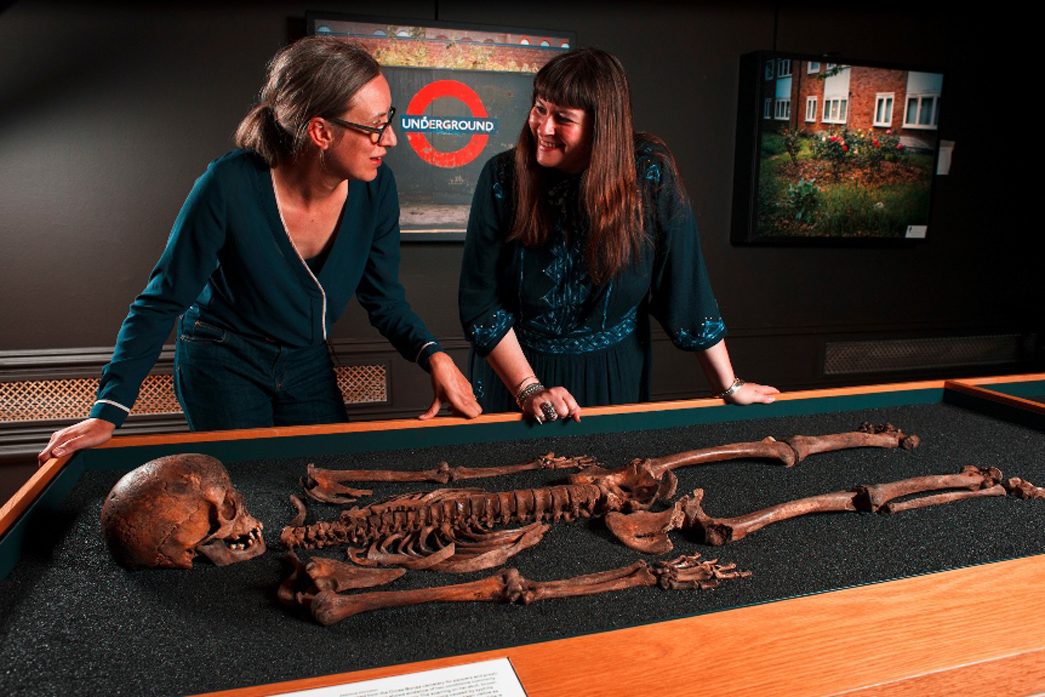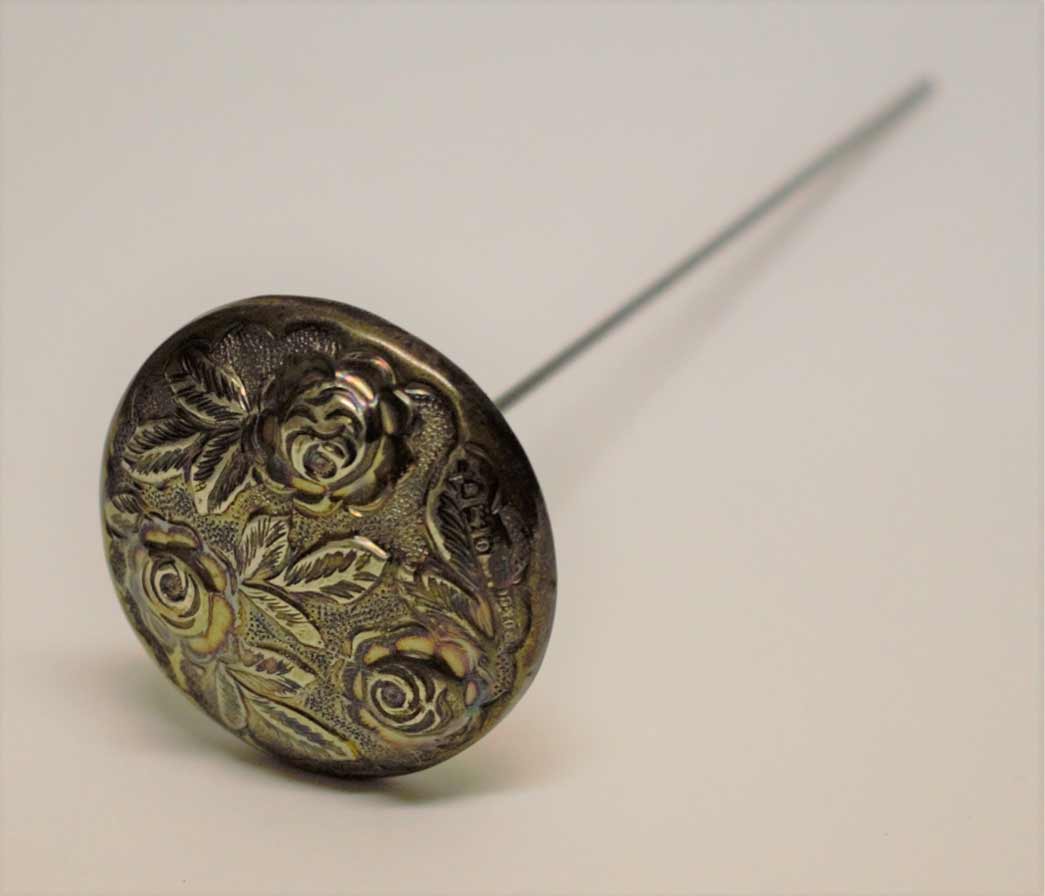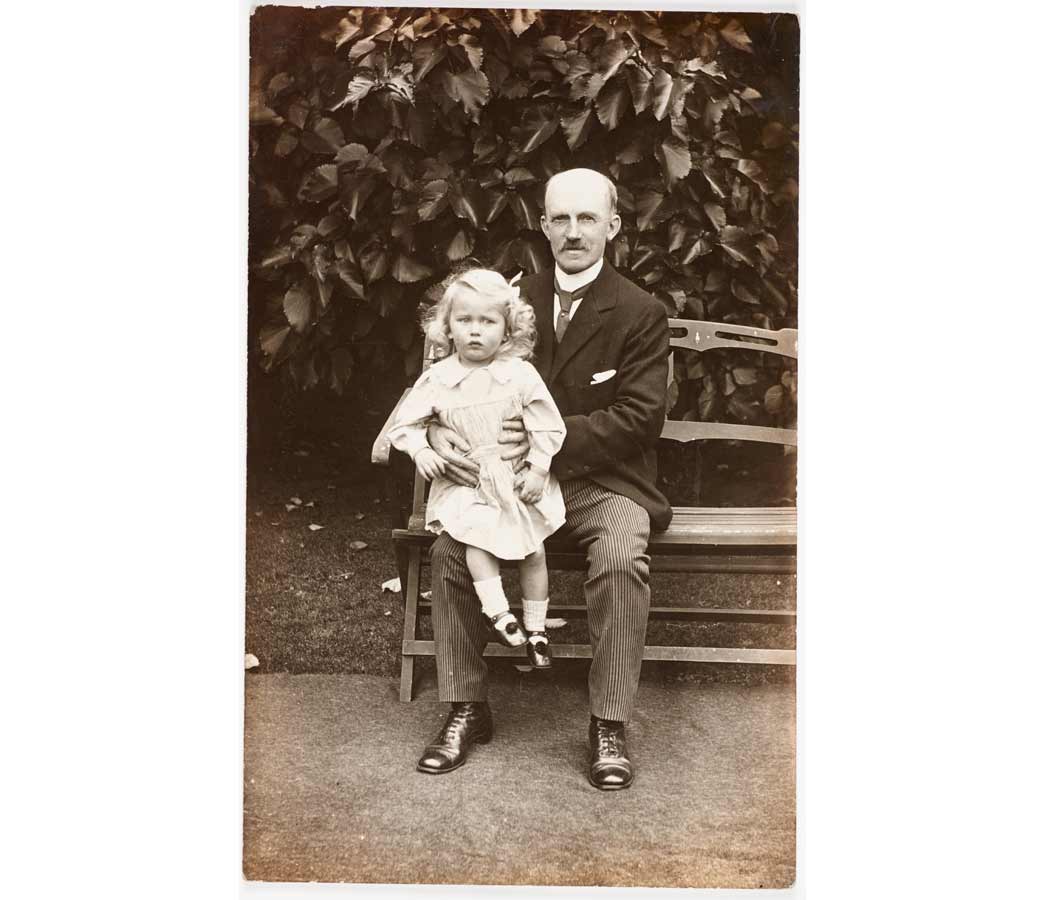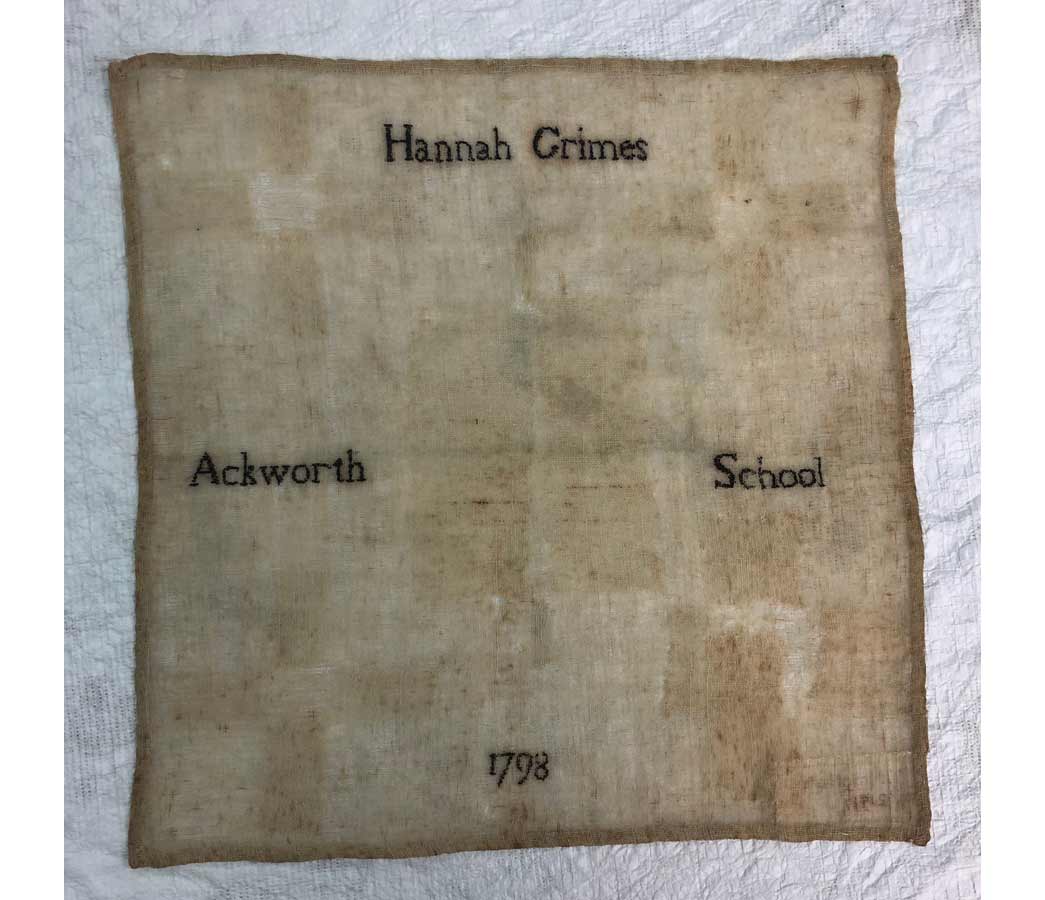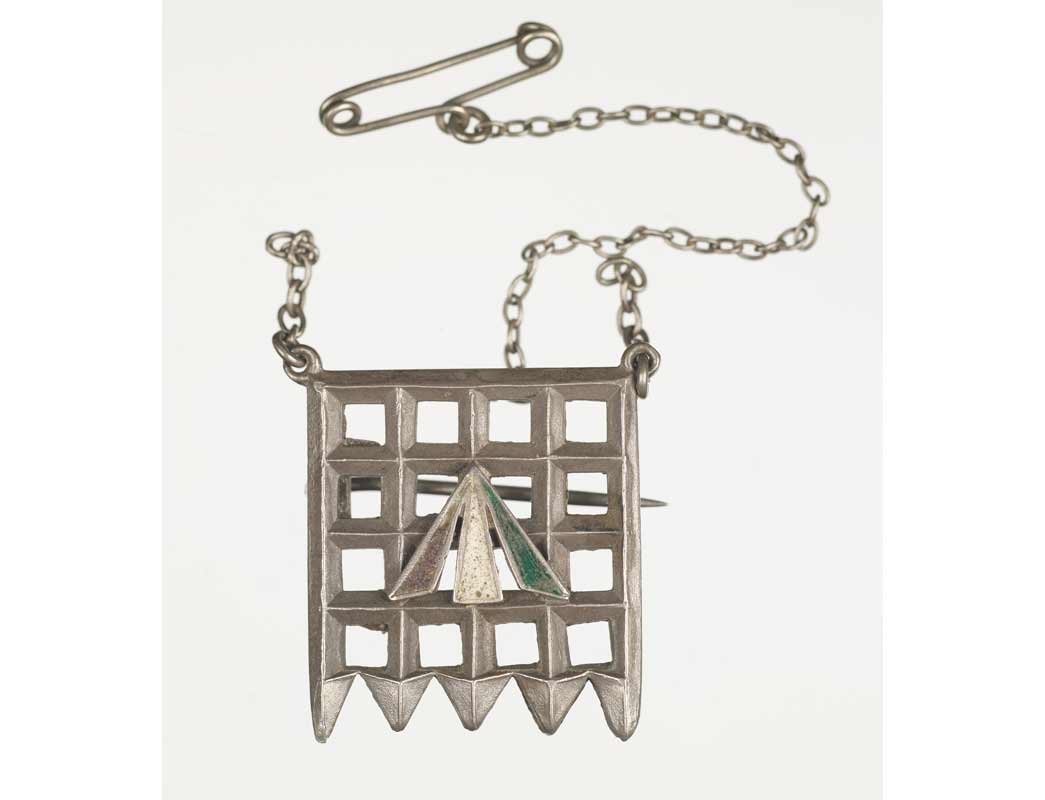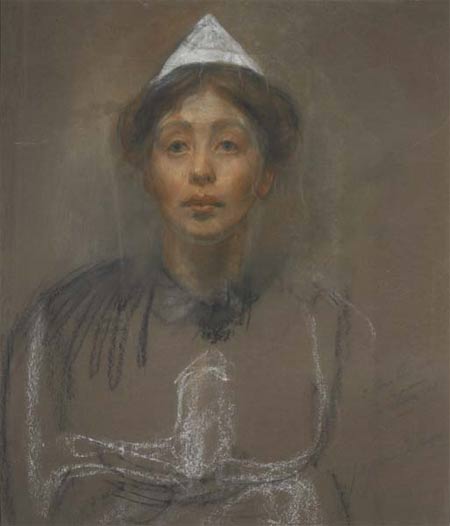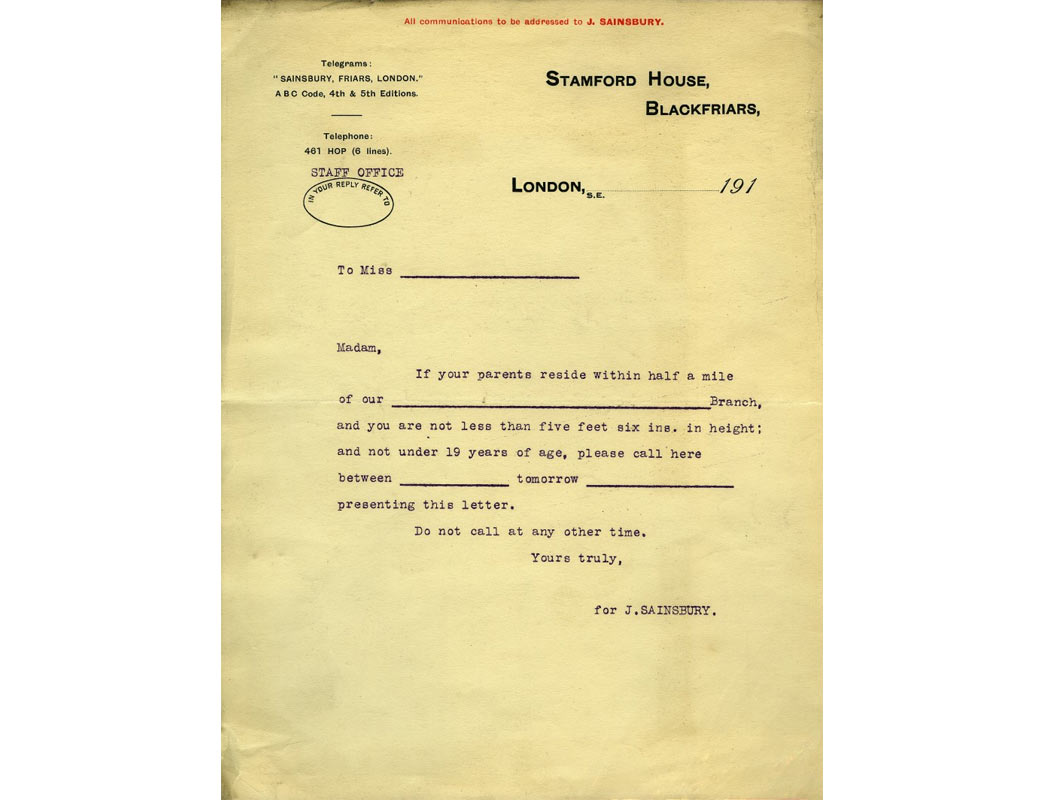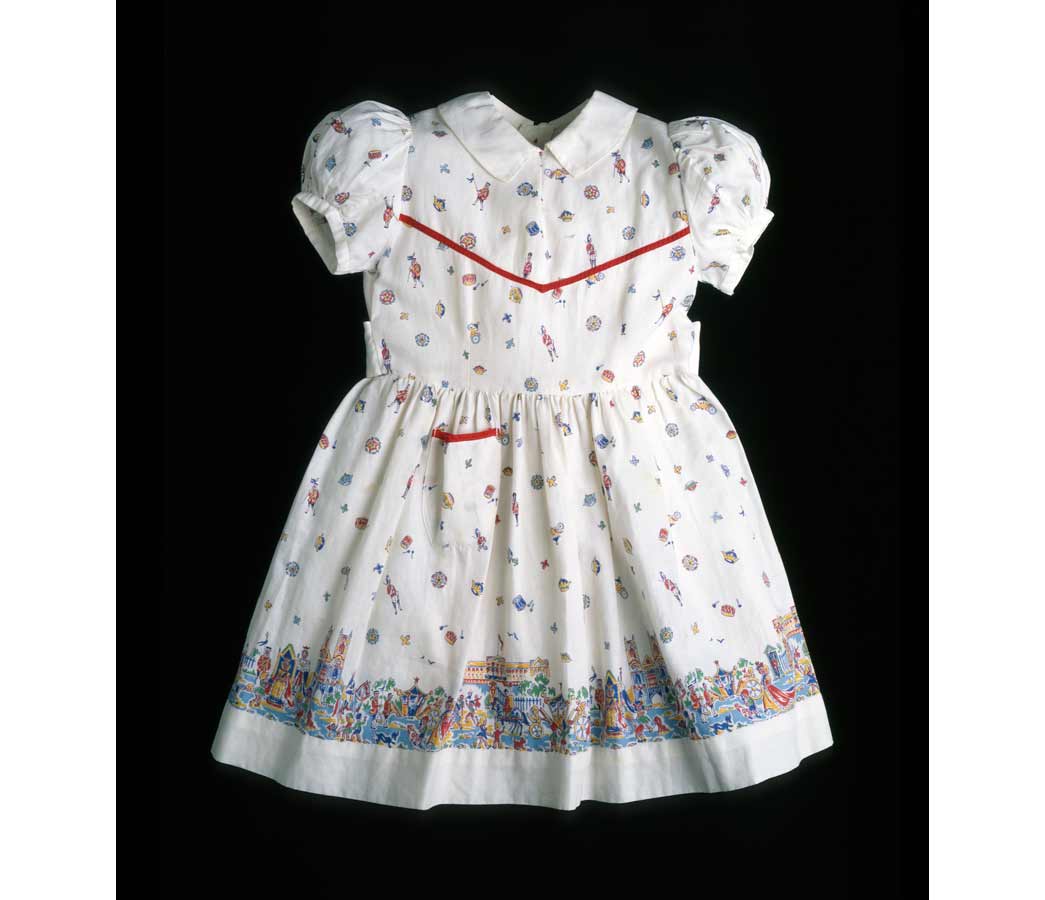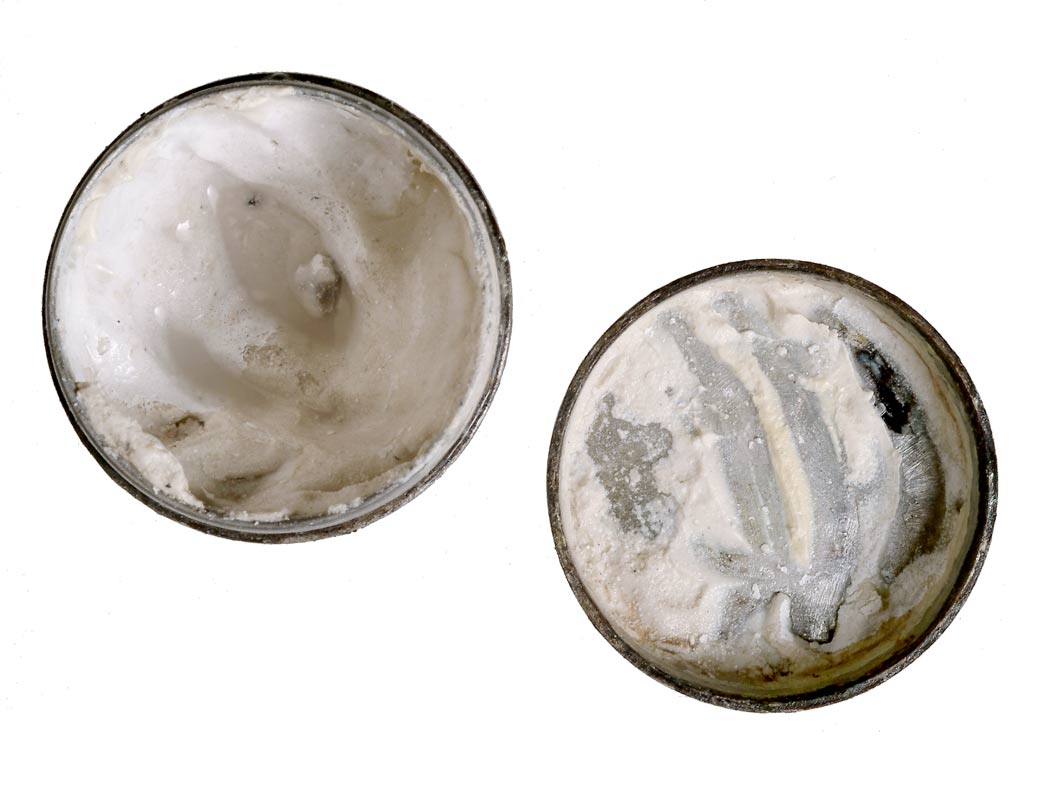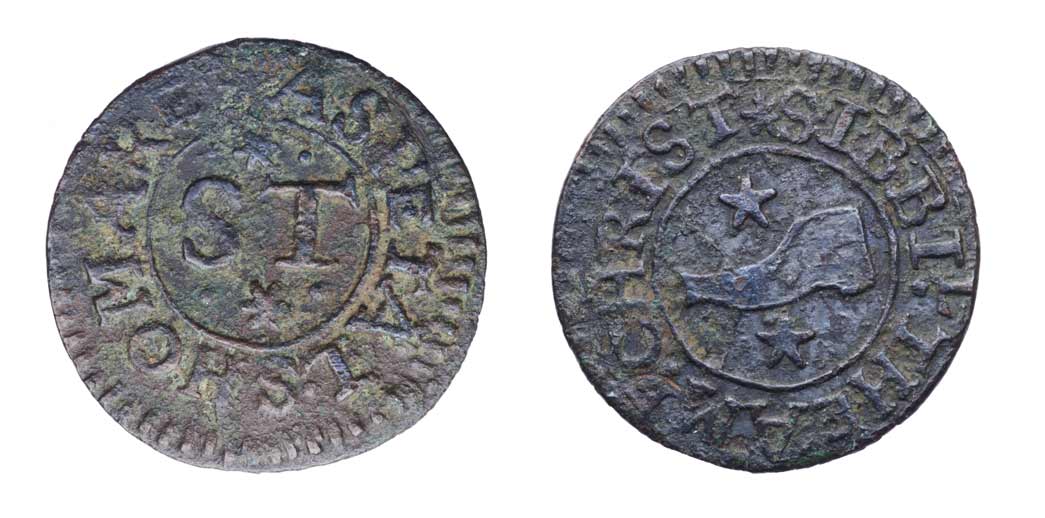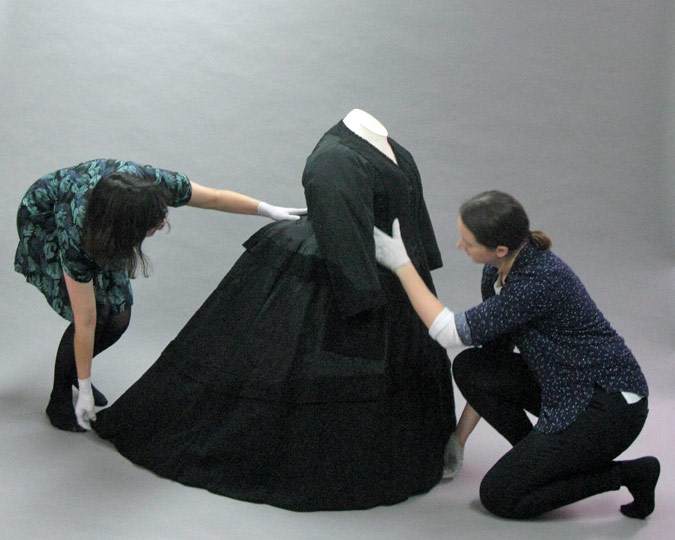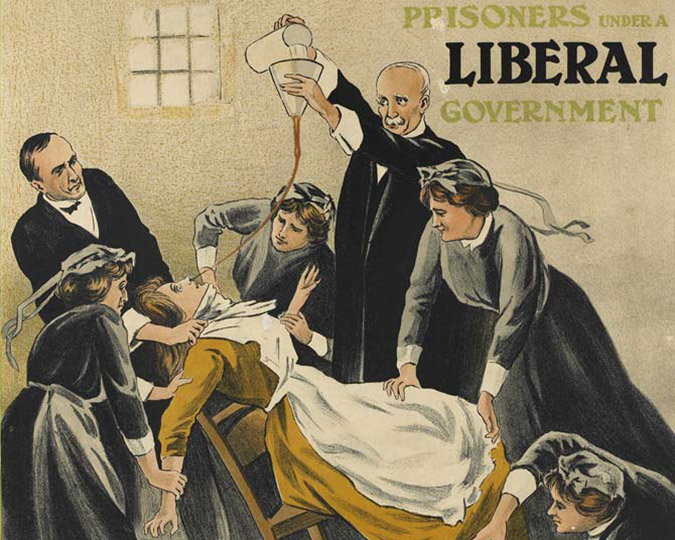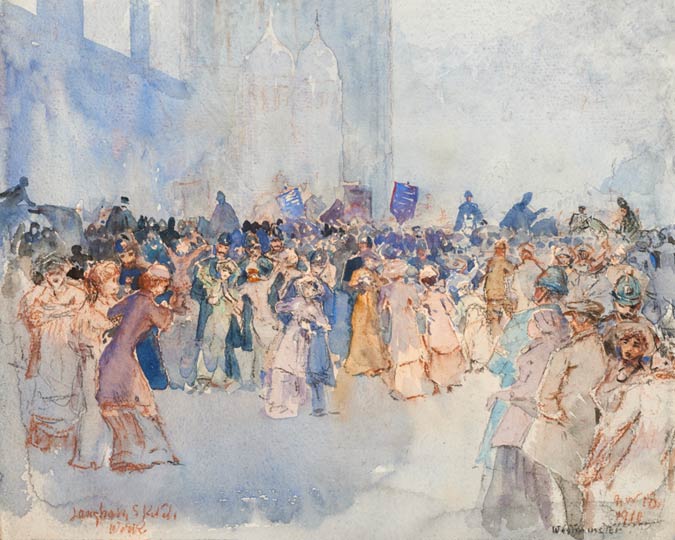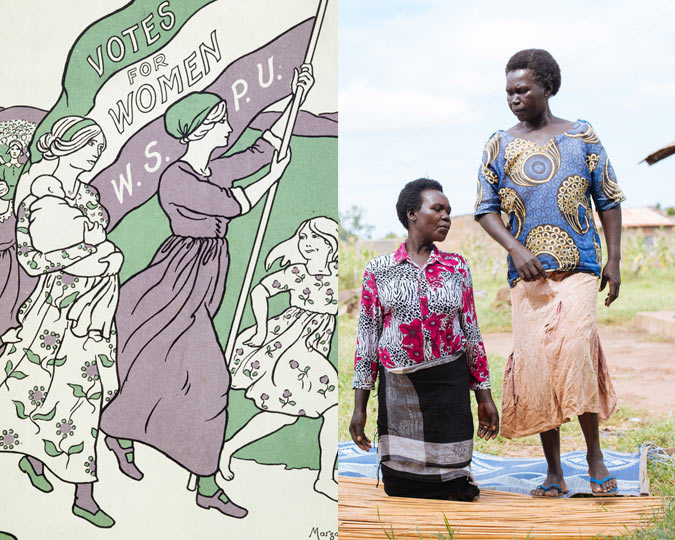For International Women's Day, we asked staff from across the Museum of London to pick their favourite object with a female focus from our collections. Here are some of their choices, and the women's stories they tell.
Skeleton of a women in her late teens, excavated from Cross Bones graveyard
Sharon Ament, Museum of London Director: I am drawn to one of the skeletons in our Human Osteology collection. These are the remains of a teenage girl who was buried in Cross Bones graveyard in Southwark. She lived in the first half of the 19th century and the evidence shows that her life was terribly hard. She was buried in a pauper's grave and she is nameless, like so many of the people whose bodies were interred in this cemetery.
The power of our collection is that we can determine much about her short life through the expert analysis of our osteological team. We know about her living conditions: she did not have enough to eat; she was short in height which is a sign of malnutrition; she had suffered from rickets, a condition also related to poverty that caused her legs to bend and bow. But most horrifically of all, this young girl was afflicted by syphilis, a sexually transmitted disease. She would have suffered terribly, it is very likely that she would have had open sores on her face, legs and arms. Her bones show signs of malformation, a characteristic of the later stages of the illness.
She was one of the millions who lived in poverty in 19th century London. She was probably considered to be the lowest of the low. I imagine that in her own lifetime she could not have dreamed that one day she would be celebrated, as she was in 2016 at the renowned Hunterian Museum in Glasgow, when she lay beside a Roman and a Cluniac monk as part of our joint exhibition with the Wellcome Trust.
Poverty continues today, and research shows that women and girls across the globe are disproportionately affected. The evidence is written in our bones.
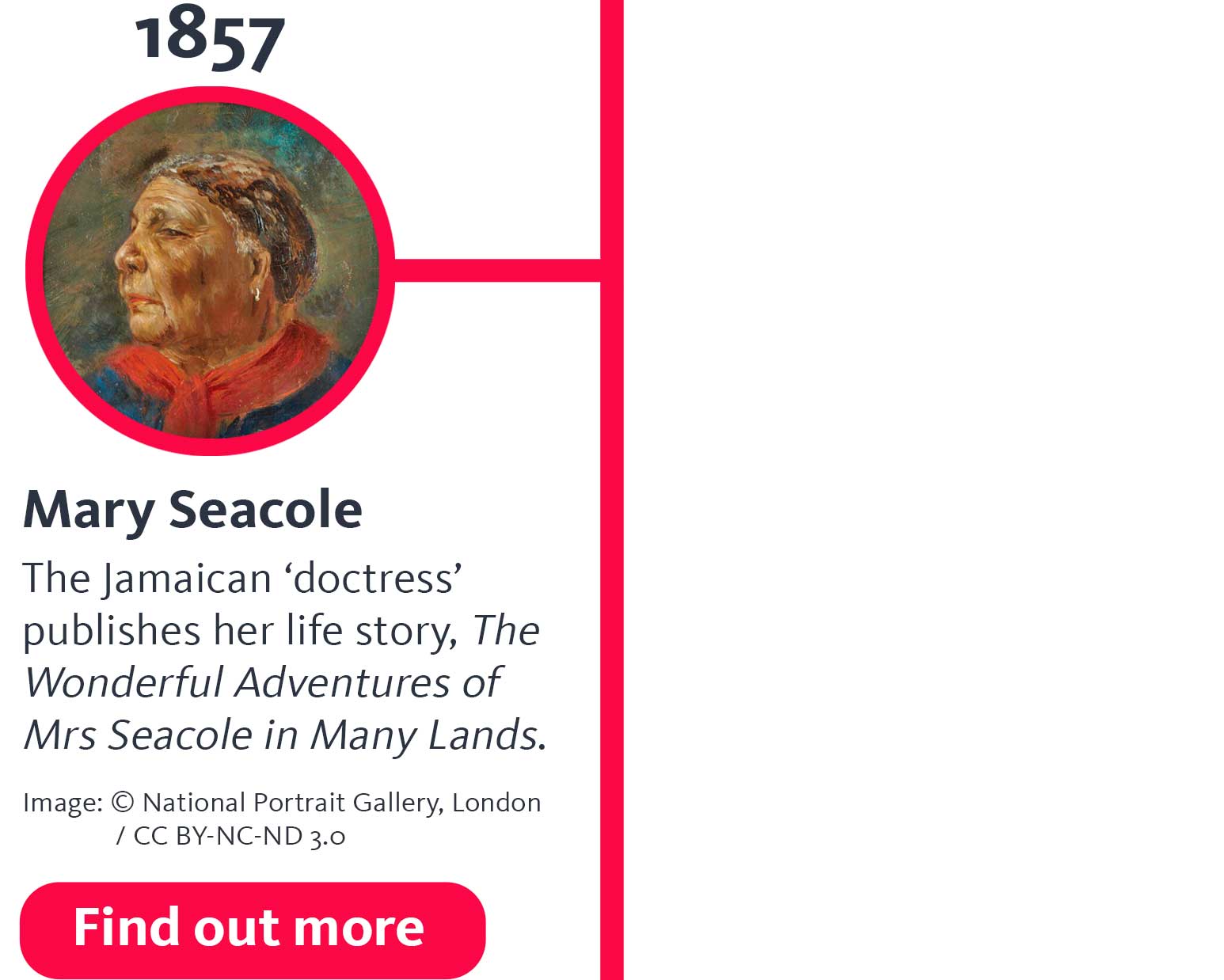
Wonderful Adventures of Mrs Seacole in Many Lands, 1857
Mary's autobiography was the first to be published by an Afro-Caribbean woman in Britain.
Marina Spiteri, Memories of London Programme Coordinator: This is the autobiography of Mary Seacole, who worked as a nurse during the Crimean War. Her story is so interesting, but personally I just like the book. She writes it in a really surprising way because she isn't modest and doesn't hide her achievements. She shouts about them because she knows that adventure, shock and exaggeration sells, and at this point in her life she was flat broke. She portrays herself as a respectable middle class Victorian woman, even though now we often set her apart from other women of her time and particularly emphasise the colour of her skin. It's a little book with a huge story waiting to be read.
Hatpin, or woman's weapon? 1909
Danielle Thom, Curator of Making: These hatpins are such simple objects, but they have a hidden history. Long, pointed steel pins topped with a decorative bezel, they were worn by women in the late 19th and early 20th century, when elaborate broad-brimmed hats were in vogue. Their intended use was to anchor the hat to the equally elaborate, broad hairstyle worn underneath, but they soon developed another purpose. As women increasingly entered London’s public spaces – as workers, consumers, campaigners and students – they were subject to harassment and the threat of violence from predatory men.
The sharp hatpin, sometimes as much as a foot long, became a handy weapon, used by women from all walks of life for self-defence. There was even a popular music-hall ballad, Never Go Out Without Your Hatpin, which suggested the risks a woman ran by going out in public without this method of protection. Unsurprisingly, the lengthy hatpin attracted the ire of many men, if outraged letters written to The Times are anything to go by!
Photograph of a Suffragette father and son, 1910-13
Rose Briskman, Paper Conservator: My choice is a bit of an odd one, being a photograph of a father, Thomas Lamartine Yates with his small son, Paul, on his lap. They look to be a slightly uncomfortable duo. Tom Yates was married to Rose Lamartine, a suffragette. They both worked to gain women’s suffrage. They both also loved cycling - I like them already! In January 1909 Tom gave Rose a letter containing the sentence 'The present I give thee is not gold or silver but permission freely and gladly, to offer up thy liberty for the benefit of downtrodden women'.
Rose was imprisoned for one month for her part in a demonstration at the House of Commons later that same year. Her son was 8 months old at the time. The weekly magazine Punch published a verse entitled "A Mother’s Sacrifice” criticising her for choosing to abandon her son. I find the idea of being given permission to do something by your husband outmoded but still I love this sentiment written in a letter to his marital teammate. I am grateful to Rose and to Tom and to others like them, who braved public criticism, so that there is now much more choice in how parents share parenting.
Darning sampler by Hannah Grimes, 1798
Lucie Whitmore, Fashion & Textile Curator: This small and unassuming object is a sampler, embroidered and darned by Hannah Grimes when she was a student at Ackworth School in Yorkshire; a Quaker boarding school for children whose parents were not wealthy. The girls were taught sewing, knitting and darning, to prepare them for their future married lives or provide them with skills through which they could one day make a living.
It is unusual to know more than the most basic facts about the women whose names are preserved in their needlework. With Hannah we know only the rough dates of her birth and death, her faith, and of course her skill with a needle. But for me this sampler represents the many unknown women and girls for whom sewing was an inevitable part of life; something for which they would rarely have been recognised, celebrated or thanked. Throughout history, sewing has variously been a joy, a burden, a comfort, a necessity, a livelihood and a lifeline for countless women. This sampler reminds us of the skill and stories that lie behind that often anonymised women’s labour.
Giulia Delprato, Marketing Officer: This silver and enamel brooch, designed by suffragette and pacifist Sylvia Pankhurst, was presented to Kate Lilley on her release from Holloway Prison in 1912. Kate and her sister Louise were arrested for breaking windows in the War Office and sentenced to two months hard labour, and endured a short period of hunger strike.
Thanks to prison accounts, we know that Kate and Louise were placed in neighbouring cells and found comfort and support in the companionship of other women sharing their fate.
I love how Sylvia’s design, featuring the emblem of the House of Commons and an arrow, painted in classic purple, white and green enamel, seem to represent the strength of the women who, despite being imprisoned, starved and isolated, kept fighting for their right to political representation.
Kat Petersen, Sainsbury Archivist: Like many shops, Sainsbury’s had to recruit women during the First World War. They took up exactly the same roles as the men they were replacing – with the exception that they were provided with chairs to sit on behind the counter. On some level this sounds like the beginnings of equality in the workplace, but what strikes me most about this letter is its expectation that women who might work are young and unmarried (not to mention living with their parents) and that being too short would disqualify you!
Having said that, many women took to being given these opportunities and by the end of the war around a third of Sainsbury’s shops were managed by women. Demobilised men were sent for refresher training before returning to their pre-war jobs, but some of the women who had taken their places remained with Sainsbury’s. I really like the story of Alice Hayes, who had become manager of the store at 43 High Street, Islington. She was demoted to saleswoman when a new male manager was appointed in December 1919, but her talents had been recognised, and when the post of manager at 159 Queen’s Crescent, Kentish Town became vacant three months later, she was offered the job and remained there until July 1931.
Coronation dress, 1953
Simone Few, Audience Lead, Exhibitions & Displays: I think it's easy to forget with our patriarchal history that we've been governed by some pretty awesome women. I love this little dress, made to be worn by Helen Clark at the coronation of Queen Elizabeth II. This woman must also now be at least in her sixties. How exciting it must have been for a little girl to see a woman crowned as queen!
Simple Simon and Wee Willie Winkie, 1911
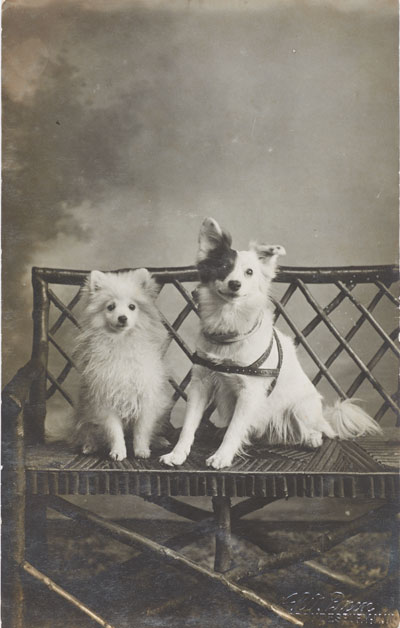
Postcard with studio photograph of two dogs, 1911
Their owner, Suffragette Mary Leigh, was imprisoned for refusing to pay dog tax on SImple Simon and Wee Willie Winkie.
Emily Brazee, Media Officer: My favourite object is this postcard of the loyal, adorable and true; Wee Willie Winkie and Simple Simon. They were the dogs of Suffragette leader and drum major of the WSPU drum and fife band, Mary Leigh.
Handwritten on the back of the card is 'Wee Willie Winkie Simple Simon Always Together. Simple Simon Wee Willie Winkie Beloved of all M.L.' and on the other half is 'Mascots of the W.S.P.U. BAND. They worked for PRISONERS... took messages... gave signals to W.S.P.U. prisoners in Holloway Prison, to Emily Davison when all other means failed. They cost M.L. 1 mth in Holloway for refusal to pay Dog Tax. They did what they could.’
Dogs are clearly not just man’s best friend and this object is a a great reminder that sometimes just ‘doing what you can’ can change the world.
Roman foundation, 150-200
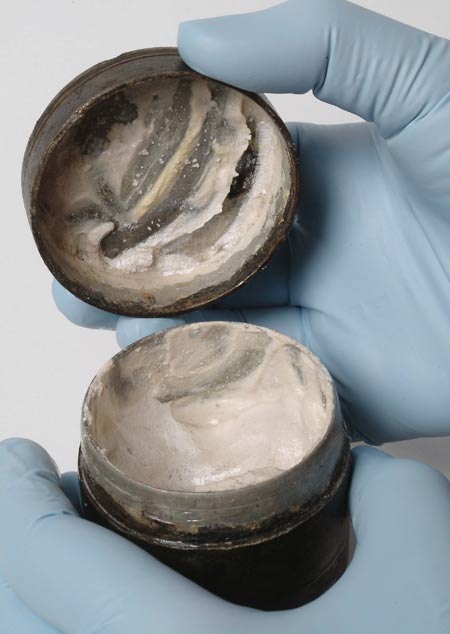
Roman container with foundation cream
The cream contained animal fat mixed with starch and with tin oxide added.
Lorrae Mcleod, Campaign Events Coordinator: In a small display at the end of our Roman gallery, which visitors often walk straight past, there is a tarnished canister, 6 centimetres wide, made of tin – a precious metal in Roman times. If polished, it would be bright and shiny, decorated with circles, just like a pot of make up on sale today.
Dating from 150 AD, it was found in 2003 at excavations of a Roman temple site in Southwark. Our curator called it “exquisite” and said he’d never come across a box with a perfectly sealed lid. Inside that little tin, we have 2,000 year old face cream. In the display there is a photo of the tin, lid removed, and if you look closely you can see, in the perfectly preserved white cream, a fingerprint.
Did this belong to a wealthy Roman lady, at the temple to hope and pray for something in her life, taking one last dab of precious cream for her face, before so carefully replacing the lid and leaving it as an offering. Every morning, I think of that lady as I put moisturiser on my face, from a jar just like the tin in our gallery. Did she get her wish?
Trade token issued by widow Sibbel Theame, c. 1648
Hazel Forsyth, Curator: This is a trade token, coin-like objects created by business owners to allow them to make change. This token was issued by Sibbel (Sibbil) Theame, widow and resident shoemaker at Christ's Hospital School from 1654 to 1666. Sibbell had an uneasy relationship with the Hospital governors and she was often reprimanded for making poor quality shoes. She also had frequent disagreements with her next-door neighbour who accused her of harbouring 'men in her rooms'. The Great Fire of 1666 destroyed a large swathe of the Hospital grounds and with it Sibbell's livelihood.
She petitioned the governors to open a stall selling ginger-bread to support her three daughters, but when this was refused she set up a drinking booth in the Town Ditch. This proved an irresistible attraction to the school boys and after various bouts of heavy drinking, Sibbell was told to pull-down her booth. The last entry in the accounts of Christ's Hospital date to the 1670s. Thereafter, nothing of Sibbell's fate is known, but this token still preserves the story of one woman which might otherwise be lost.
Georgian flirting fan, 1750
Laura Turnage, Secondary Schools Programme Manager: Our work experience students are always drawn to the fans displayed in our Expanding City gallery. These are objects I've generally overlooked but as they are often gifts given to women by male admirers it's an opportunity for the students' to openly research and talk about flirting during the 1700s.
For me this has opened up new stories around the relevance of the fans not just about their beautiful symbolic decoration but also about who they might have belonged to.
Celebrate International Women's Day at the Museum of London with gallery tours and evening events.








